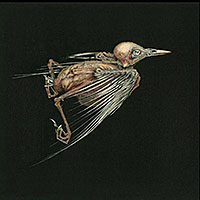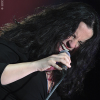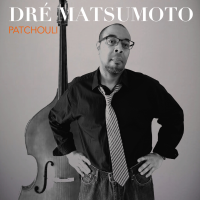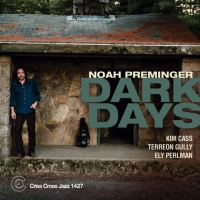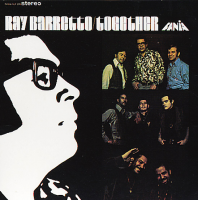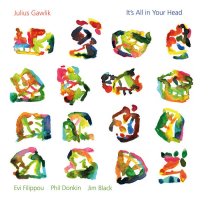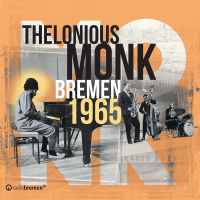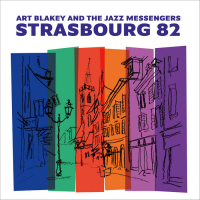Home » Jazz Articles » Album Review » Jenny Hval & Susanna: Meshes of Voice
Jenny Hval & Susanna: Meshes of Voice
Prior to launching her Susanna Sonata label, Susanna was a (largely) Rune Grammofon recording artist, releasing albums like 2009's Flower of Evil under her own name, and others, like 3, from the same year, as one-half of her electro-centric alter ego, Susanna and the Magical Orchestra, with keyboardist Morten Qvenild. Neither project prepared her fans, however, for 2012's If Grief Could Wait, her ECM Records debut and collaboration with Baroque harpist Giovanna Pessi that also introduced, in a different context, some of the music that would be heard the following year on The Forester.
Hval remains with Rune Grammofon, having released two acclaimed albums on the label, 2011's Viscera and the 2013 follow-up Innocence is Kinky. Both singers have expanded the singer/songwriter purview in different ways, with Hval a more extreme improviser and stream-of-consciousness lyricist to Susanna's carefully constructed and delivered music. it may be surprising to find that the nexus point where the two singers meet actuality exists, but with the aptly titled Meshes of Voice, they make it clear that they share more than might meet the eye from their past work.
Despite the music and lyrics being credited to both Hval and Susanna—and there's no doubt that each singer helped the other to broaden her own approach—it does seem possible to discern the songs where Susanna's moodier introspections dominate, versus Hval's greater idiosyncrasies. Still, in this 15-piece song cycle where tunes sometimes runs into the next but elsewhere are delineated by lengthy pauses, it's not hard to see how the two drive each other into unfamiliar territory without ever losing sight of what makes them distinctive performers in their own right. Ten songs into the set, Hval sings "Honey Dew," a near-haiku miniature of just 80 seconds, over a melancholic harmonium cushion:
"Dawn came quiet
Dawn came cool
The inside of my eyelid
Is glazed with honey dew."
Four songs later, Susanna responds with the even bleaker "Dawn," her acoustic piano driving a reiteration of precisely the same lyrics where, when she sings the words "honey dew," a near-angelic choir of layered, processed voices repeat the phrase before she continues with:
"Dawning beauty
Is dazzling me
The hissing of her body
Is pleasure to my ears.
I can see that she is laying down open
The pleasant apple-milk from the breasts
Luring and enticing
A poor soul like me
To a certain death inside her chewing mouth."
Between each verse, a chorus of lyric-less voices, led by Wallumrod's own, act as a paradoxical bridge that demonstrate the beauty that can be found in the deepest, darkest of places.
Repetition is a constant throughout these clearly connected songs, with phrases reiterated over different musical contexts, lending the album an abstruse sense of concept and context; the phrase "glazed with honeydew" also found in the more ethereal "Thirst That Resembles Me," where the two singers create an atmosphere of voices that resolve into the clear, pure sound of a zither as Hval sings its final two stanzas, before returning to the ether that leads in to the even more outré "I Have a Darkness." Voices combine with noise to create a bold sonic blend that builds to a fever pitch, only to dissolve, again, into a choral cloud that shifts dramatically to "A Sudden Swing." Driven by Susanna's alto and grand piano—with Splashgirls Jo Berger Myhre and Trondheim Voice's Anita Kaasbøll contributing deep-in-the-gut double bass and thundering, mallet-driven toms and cymbals respectively, it's the album's most conventionally structured song—and, perhaps not so surprisingly, not the album's first single. That Hval and Susanna have chosen the far more sonically extreme and noise-driven "I Have Walked This Body" instead is as significant a statement of intent as the duo could make.
Elsewhere, the singers experiment with beautifully processed acoustic instruments and samples, making the instrumental "Droplets" a hypnotic album intro of trance-inducing repetition that draws attention away from the real world and into the duo's rarefied sonic universe, segueing into the darker-hued "Black Lake," which begins with Susanna's voice dominant as Hval sings unison...but buried deeper in the mix. The purity of grand piano is gradually augmented with electronics that lead to a middle section of pure noise—it being no coincidence that Berger Myhre and Kaasbøll are both also credited, alongside Hval and Susanna, with contributing both noise and effects to the recording—as the final verse ultimately emerges, with the closing line:
"The black lake took and the black lake gave
The black lake took and the black lake gave."
That same line closes both the song "The Black Lake Took" and the album; a more folkloric yet still sonically expansive song, with Hval's soprano layered over a reverb- rich, finger-picked acoustic guitar, the line is repeated, over and over by a multi-tracked Susanna, with Hval's wordless improvisation leading to her picking up the same line as Susanna then begins to repeat another key word, "Hollow," from "Black Lake," a third line then emerging as the voices gradually bring the album to a haunting close.
Without knowing how it was constructed, it's clear, from the repetition of lines throughout and small musical motifs that also periodically emerge, that the album was conceived as—or, at the very least, found its way, during recording, towards—a conceptual whole, Yes, individual songs stand out as discrete entities that can be heard on their own, but Meshes of Voice works best as an entire, 52-minute experience. As different as their approaches are, Hval and Susanna do, indeed, mesh beautifully on an album that explores a range of human emotion with the starkest honesty, as the music crosses a broad plateau from folkloric beauty and deeper melancholy to noise-driven extremes. If starting her own label has afforded Susanna the complete freedom to create albums as impressive as the chamber-like The Forester and now, with Hval, the more edgy experimentation of Meshes of Voice, then where she will go next is anybody's guess, but there's absolutely no doubt that whatever path she takes will be one well worth following.
Track Listing
Droplet; Black Lake; Milk Pleasures; I Have Walked the Body; A Mirror in My Mouth; Thirst That Resembles Me; I Have a Darkness; A Sudden Swing; Honey Dew; Medusa; Running Down; House of Bones; Dawn; The Black Lake Took.
Personnel
Susanna Wallumrod
vocalsJenny Hval: voice, effects, noise, samples, guitar, autoharp, piano; Susanna: voice, grand piano, effects, noise, samples, electric harmonium; Anita Kaasbøll: voice, effects, noise, drums; Jo Berger Myhre: double bass, zither, effects, noise.
Album information
Title: Meshes of Voice | Year Released: 2014 | Record Label: Susanna Sonata
Tags
PREVIOUS / NEXT
Support All About Jazz
 All About Jazz has been a pillar of jazz since 1995, championing it as an art form and, more importantly, supporting the musicians who make it. Our enduring commitment has made "AAJ" one of the most culturally important websites of its kind, read by hundreds of thousands of fans, musicians and industry figures every month.
All About Jazz has been a pillar of jazz since 1995, championing it as an art form and, more importantly, supporting the musicians who make it. Our enduring commitment has made "AAJ" one of the most culturally important websites of its kind, read by hundreds of thousands of fans, musicians and industry figures every month.


